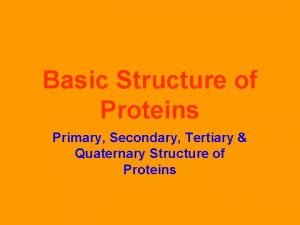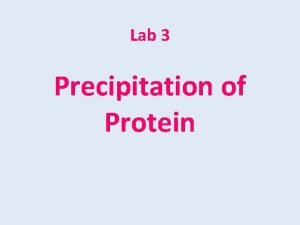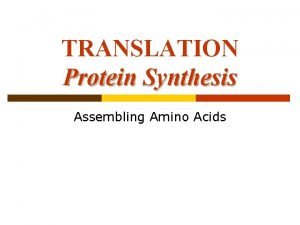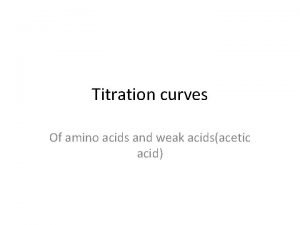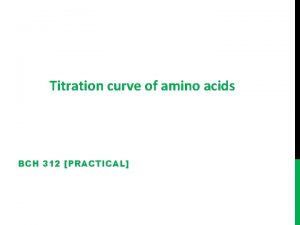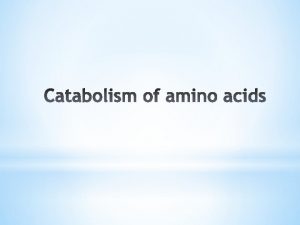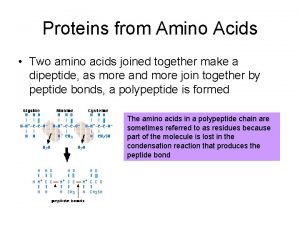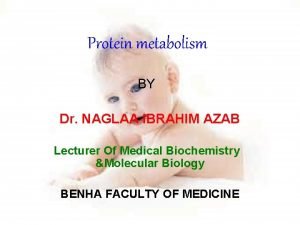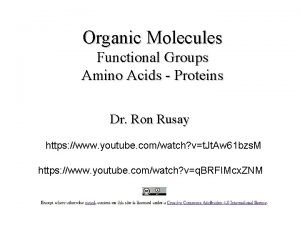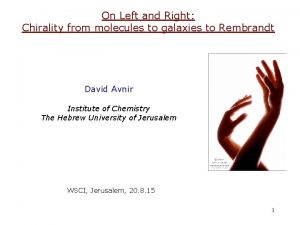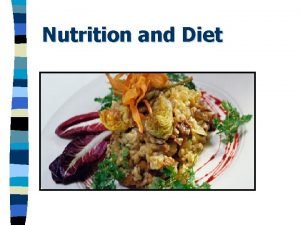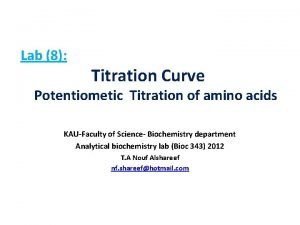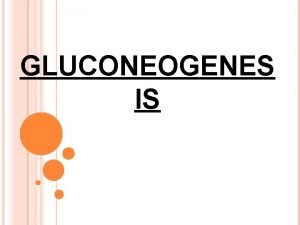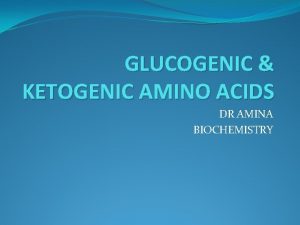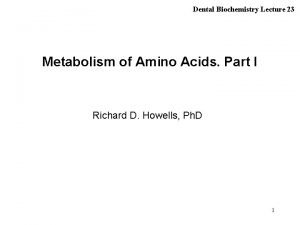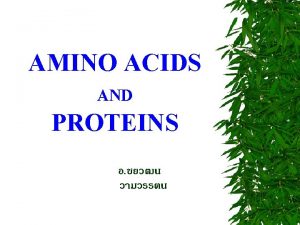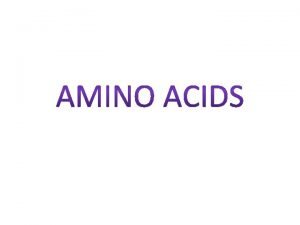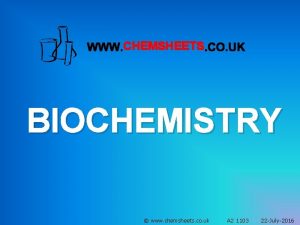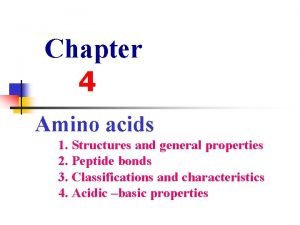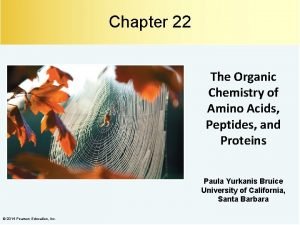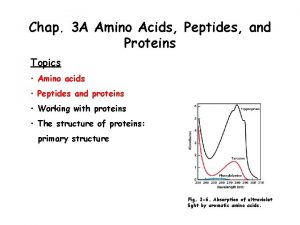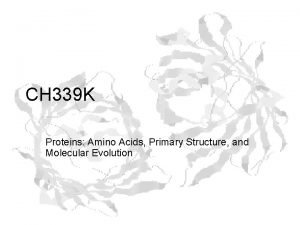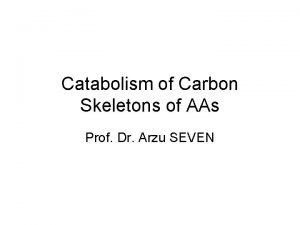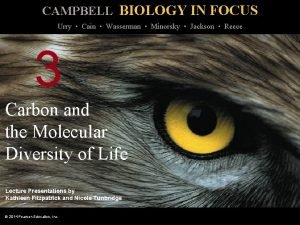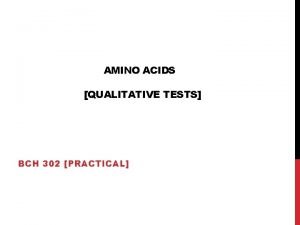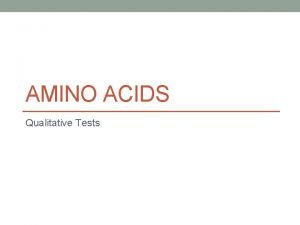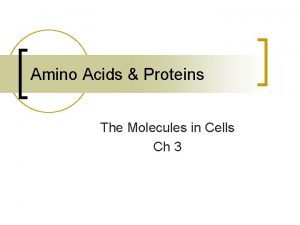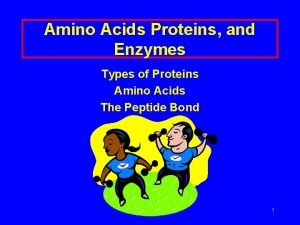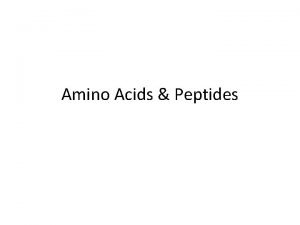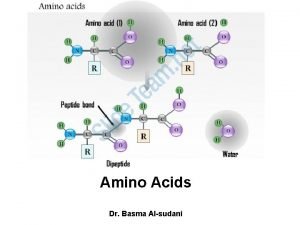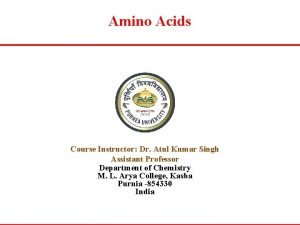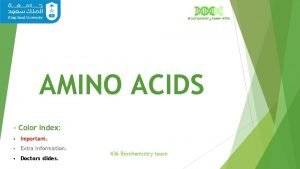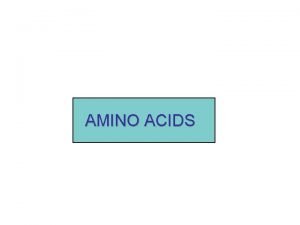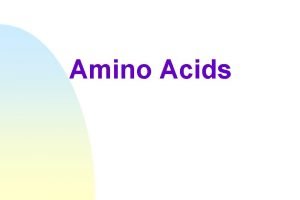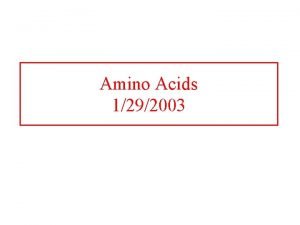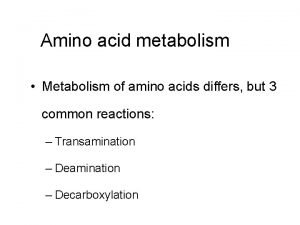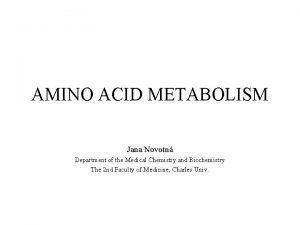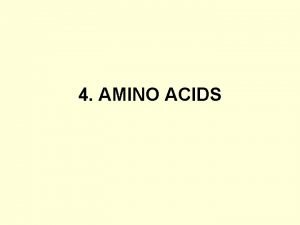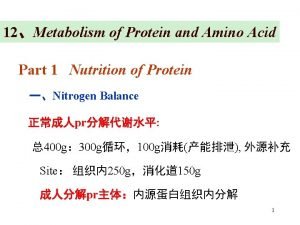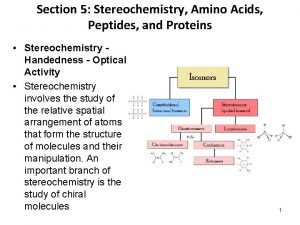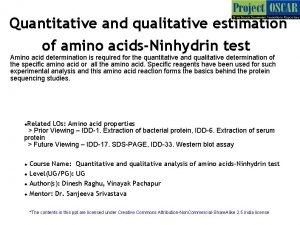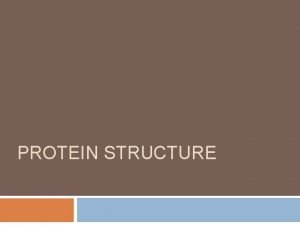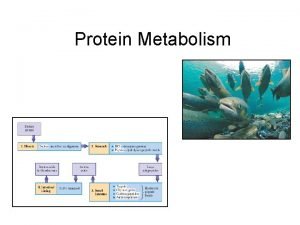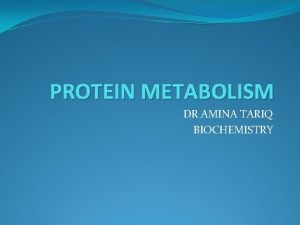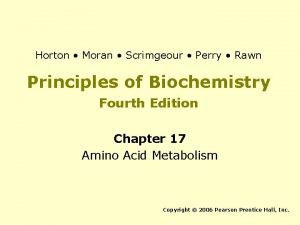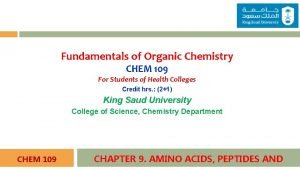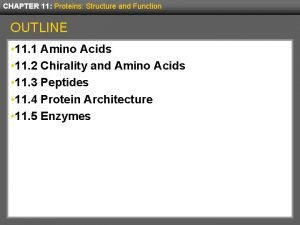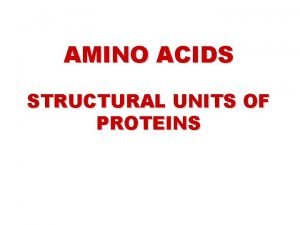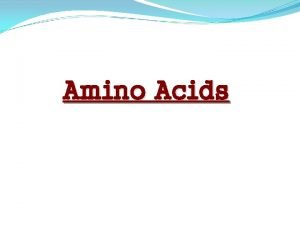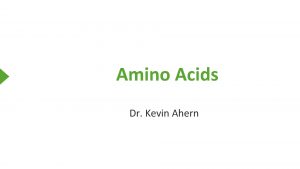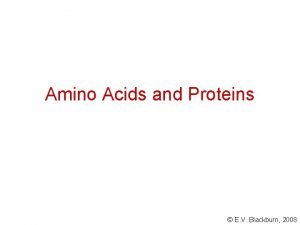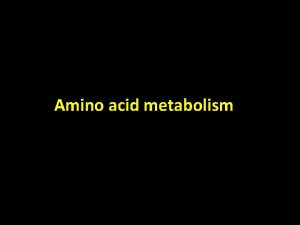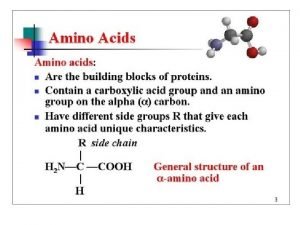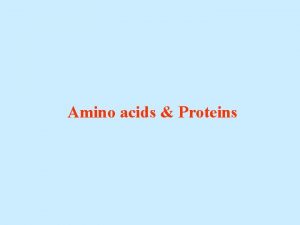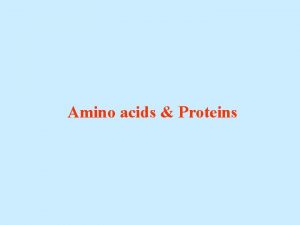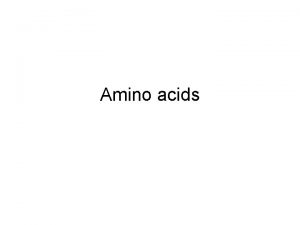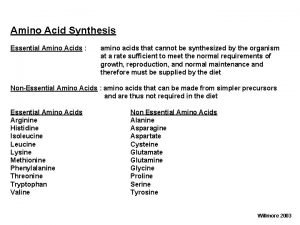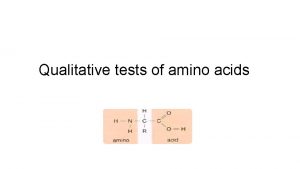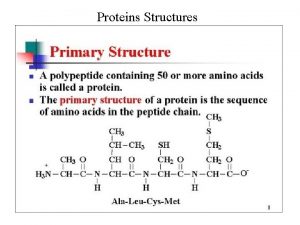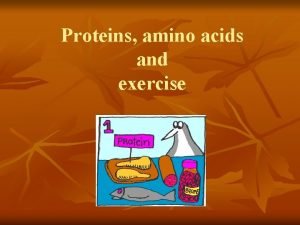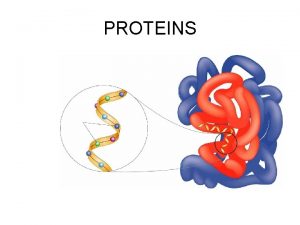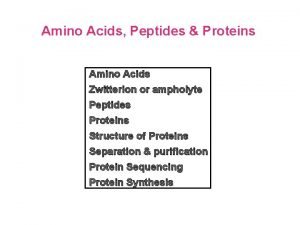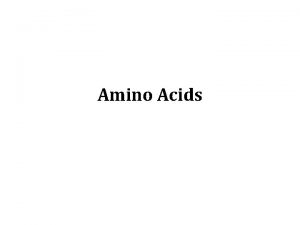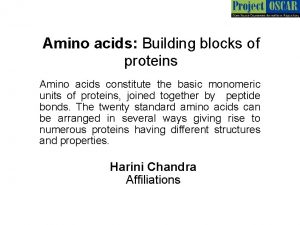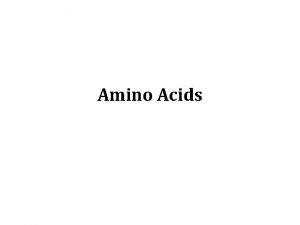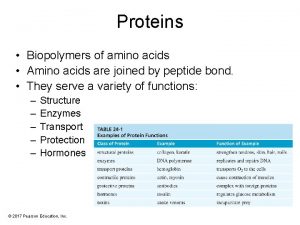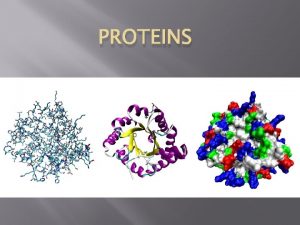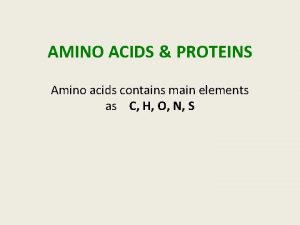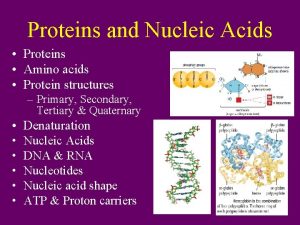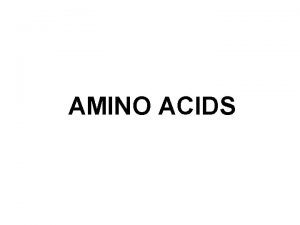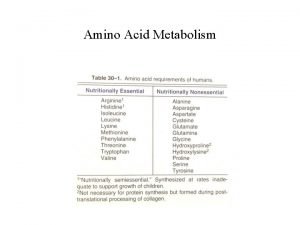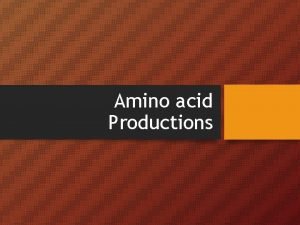CH 339 K Proteins Amino Acids Primary Structure























































- Slides: 55

CH 339 K Proteins: Amino Acids, Primary Structure, and Molecular Evolution

a-Amino Acid a

• All amino acids as incorporated are in the L-form • Some amino acids can be changed to D- after incorporation • D-amino acids occur in some non-protein molecules

I prefer this layout, personally…




2 Amides

The Acidic and the Amide Amino Acids Exist as Conjugate Pairs




Ionizable Side Chains

Hydrogen Bond Donors / Acceptors

Disulfide formation

Modified Amino Acids 4 -Hydroxyproline Collagen 5 -Hydroxylysine Collagen 6 -N-Methyllysine Histones g-Carboxygultamate Clotting factors Desmosine Elastin Selenocysteine Several enzymes (e. g. glutathione peroxidase)

A Modified Amino Acid That Can Kill You Histidine Diphthamide (2 -Amino-3 -[2 -(3 -carbamoyl-3 -trimethylammoniopropyl)-3 H-imidazol-4 -yl]propanoate)

Diphthamide Continued – Elongation Factor 2 • Diphthamide is a modified Histidine residue in Eukaryotic Elongation Factor 2 • EF-2 is required for the translocation step in protein synthesis

Corynebacterium diphtheriae Corynebacteriophage

Diphtheria Toxin Action • Virus infects bacterium • Infected bacxterium produces toxin • Toxin binds receptor on cell • Receptor-toxin complex is endocytosed • Endocytic vessel becomes acidic • Receptor releases toxin • Toxin escapes endocytic vessel into cytoplasm • Bad things happen

Diphtheria Toxin Action • Diphtheria toxin adds a bulky group to diphthamide • e. EF 2 is inactivated • Cell quits making protein • Cell(s) die • Victim dies

Other Amino Acids


Every a-amino acid has at least 2 p. Ka’s




Polymerization DG 0’ = +10 -15 k. J/mol

In vivo, amino acids are activated by coupling to t. RNA Polymerization of activated a. a. : DGo’ = -15 -20 k. J/mol

• In vitro, a starting amino acid can be coupled to a solid matrix • Another amino acid with • A protected amino group • An activating group at the carboxy group • Can be coupled • This method runs backwards from in vivo synthesis (C N)

Peptide Bond

Resonance stabilization of peptide bond

Cis-trans isomerization in prolines • Other amino acids have a trans-cis ratio of ~ 1000: 1 • Prolines have cis: trans ratio of ~ 3: 1 • Ring structure of proline minimizes DG 0 difference







MOLECULAR EVOLUTION


Neutral Theory of Molecular Evolution • Kimura (1968) • Mutations can be: – Advantageous – Detrimental – Neutral (no good or bad phenotypic effect) • Advantageous mutations are rapidly fixed, but really rare • Diadvantageous mutations are rapidly eliminated • Neutral mutations accumulate

What Happens to a Neutral Mutation? • Frequency subject to random chance • Will carrier of gene reproduce? • Many born but few survive – Partly selection – Mostly dumb luck • Gene can have two fates – Elimination (frequent – Fixation (rare)

Genetic Drift in Action Our green genes are evolutionarily superior! Ow! Never mind…

Simulation of Genetic Drift • 100 Mutations x 100 generations: • 1 gets fixed • 2 still exist • 97 eliminated (most almost immediately) 1 Frequency 0. 8 0. 6 0. 4 0. 2 0 0 25 50 Generation 75 100

Rates of Change

Protein Evolution Rates Different proteins have different rates

Protein Evolution Rates Different proteins have different rates

Rates (cont. ) • Slow rates in proteins critical to basic functions • E. g. histones ≈ 6 x 10 -12 changes/a. a. /year

Rates (cont. ) Fibrinopeptides • Theoretical max mutation rate • Last step in blood clotting pathway • Thrombin converts fibrinogen to fibrin

Fibrinopeptides keep fibrinogens from sticking together.

Rates (cont. ) • Only constraint on sequence is that it has to physically be there • Fibrinopeptide limit ≈ 9 x 10 -9 changes/a. a. /year

Amino acid sequences of several ribosome-inhibiting proteins

Phylogenetic trees built from the amino acid sequences of type 1 RIP or A chains (A) and B chains (B) of type 2 RIP (ricin-A, ricin-B, and lectin RCAA and RCA-B from castor bean; abrin -A, abrina/b-B, and agglutinin APA-A and APA-B from A. precatorius; SNAI -A and SNAI-B, SNAV-A and SNAV-B, SNAI'-A and SNAI'-B, LRPSN 1 -A and LRPSN 1 -B, LRPSN 2 -A and LRPSN 2 B, and SNA-IV from S. nigra; sieboldinb-A, sieboldinb-B, SSAI-A, and SSAI-B from S. sieboldiana; momordin and momorcharin from Momordica charantia; MIRJA from Mirabilis jalapa; PMRIPm-A and PMRIPm-B, PMRIPt-A and PMRIPt-B from Polygonatum multiflorum; RIPIri. Hol. A 1, RIPIri. Hol. A 2, and RIPIri. Hol. A 3 from iris hybrid; IRAr-A and IRAr-B, IRAb-A and IRAb-B from iris hybrid; SAPOF from S. officinalis; luffin-A and luffin-B from Luffa cylindrica; and karasurin and trichosanthin from Trichosanthes kirilowii) Hao Q. et. al. Plant Physiol. 2010: 125: 866 -876

Phylogenetic tree of Opisthokonts, based on nuclear protein sequences Iñaki Ruiz-Trillo, Andrew J. Roger, Gertraud Burger, Michael W. Gray & B. Franz Lang (2008) Molecular Biology and Evolution, Jan 9
 Amino acids are joined together in proteins by
Amino acids are joined together in proteins by Primary vs secondary vs tertiary vs quaternary structures
Primary vs secondary vs tertiary vs quaternary structures Precipitation of proteins by strong mineral acids
Precipitation of proteins by strong mineral acids 888-339-6469
888-339-6469 Lesson 8 quadratic functions page 339
Lesson 8 quadratic functions page 339 Dehydration synthesis of amino acids
Dehydration synthesis of amino acids Aspartate titration curve
Aspartate titration curve Titration curve of amino acids
Titration curve of amino acids Deamination of amino acids
Deamination of amino acids Amino acids
Amino acids Deamination of glutamine
Deamination of glutamine 20 amino acid structure
20 amino acid structure Right handed amino acids
Right handed amino acids Non essential amino acids in food
Non essential amino acids in food Titration curve of amino acids
Titration curve of amino acids Link reaction
Link reaction Ketogenic vs glucogenic amino acids
Ketogenic vs glucogenic amino acids Pvt tim hall
Pvt tim hall Neutral amino acids
Neutral amino acids Amino acids classification
Amino acids classification Chemsheets a2 1102 amino acids 2 answers
Chemsheets a2 1102 amino acids 2 answers Optical properties of amino acids
Optical properties of amino acids Epsilon amino
Epsilon amino Serylglycyltyrosylalanylleucine
Serylglycyltyrosylalanylleucine Which amino acids have ionizable side chains
Which amino acids have ionizable side chains Non essential amino acids mnemonics
Non essential amino acids mnemonics Dehydration synthesis of amino acids
Dehydration synthesis of amino acids Aromatic amino acids
Aromatic amino acids Phenol containing amino acids
Phenol containing amino acids Amino acid with phenol group
Amino acid with phenol group Peptide bond dehydration synthesis
Peptide bond dehydration synthesis Properties of amino acids
Properties of amino acids Biomedical importance of amino acids
Biomedical importance of amino acids Are amino acids negatively charged
Are amino acids negatively charged Conditionally essential amino acids
Conditionally essential amino acids Essential amino acids mnemonics
Essential amino acids mnemonics Polar and non-polar amino acids
Polar and non-polar amino acids Gluconeogenic amino acids
Gluconeogenic amino acids Amino acids are building blocks of
Amino acids are building blocks of Amino acid deamination
Amino acid deamination Jana novotn
Jana novotn Difference between hydrophobic and hydrophilic amino acids
Difference between hydrophobic and hydrophilic amino acids Non essential amino acids mnemonics
Non essential amino acids mnemonics What is protein
What is protein Quantitative estimation of amino acids by ninhydrin method
Quantitative estimation of amino acids by ninhydrin method Protein structure
Protein structure Protein digestion
Protein digestion Transdeamination of amino acids
Transdeamination of amino acids Ketogenic amino acids
Ketogenic amino acids Sp hybridization
Sp hybridization Salt bridges in proteins
Salt bridges in proteins Pvt tim hall
Pvt tim hall Upon hydrolysis of fibron which amino acids are produced?
Upon hydrolysis of fibron which amino acids are produced? R groups amino acids
R groups amino acids Acid base properties of amino acids
Acid base properties of amino acids Transdeamination of amino acids
Transdeamination of amino acids

